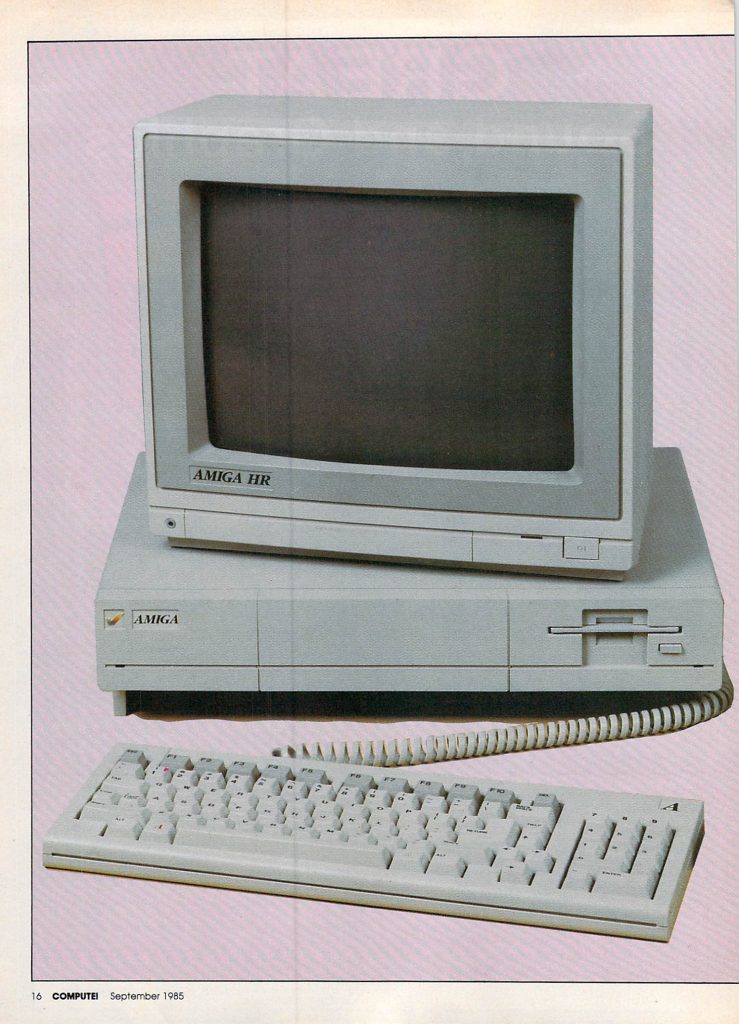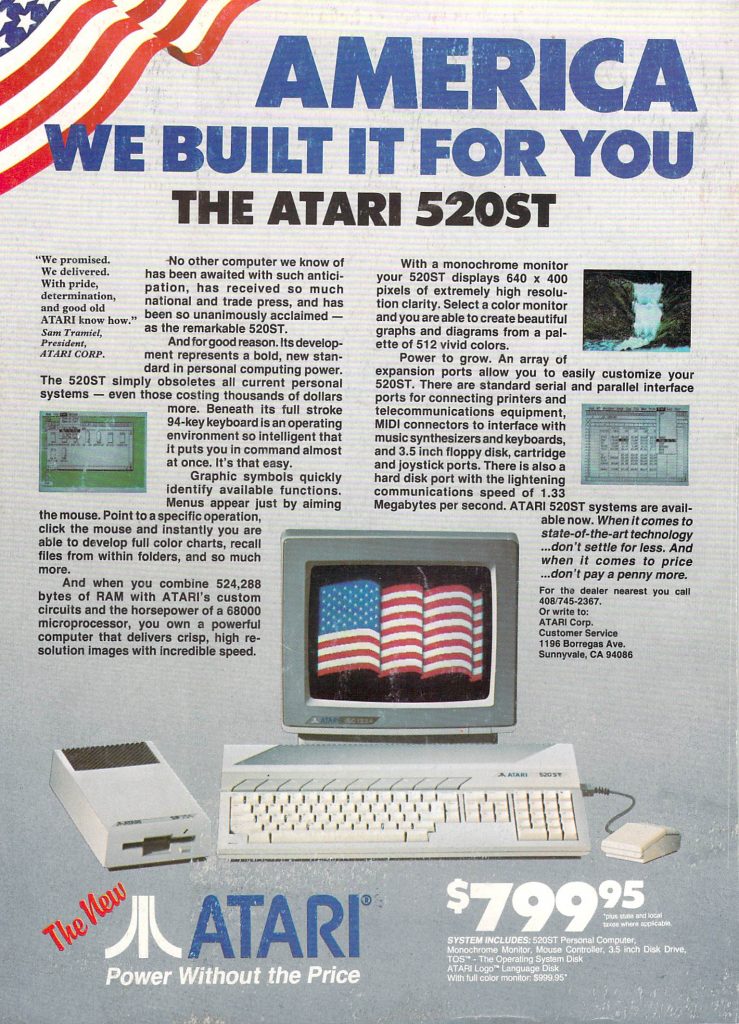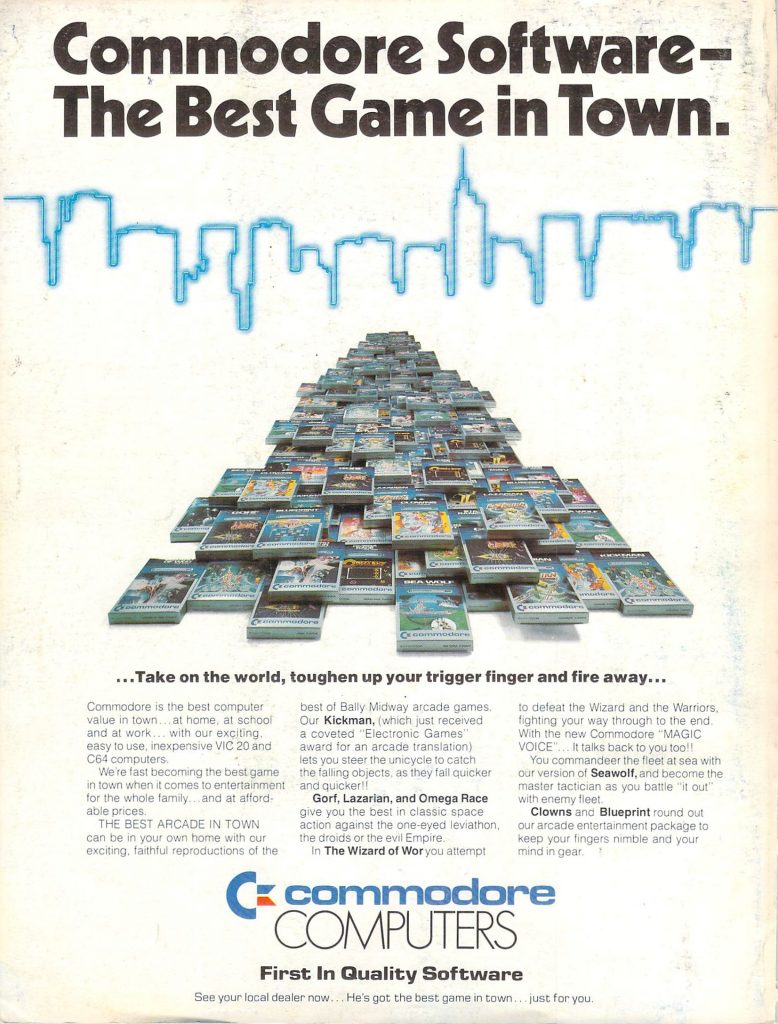Compute! was probably the best magazine for the average computer user in the early to mid 1980s and perhaps beyond. At least if you had an interest in more than one platform. Compute! covered all of the popular home computers of the time and there were a bunch in 1985 including the Commodore 64, Apple II, Atari 8-bit, PC, TI-99/4A, the brand new Amiga and Atari ST, and probably others. The September 1985 issue includes:
Features
- The Amiga: An In-Depth Review – A detailed look at the new Amiga (Amiga 1000) from Commodore. It was due to be released in August.
- The Electronic University – While it took a while for online education to really take off, it is far from new. This article tells the story of one family who is using their Commodore SX-64 to earn online degrees.
- The Last Warrior – A type-in arcade style action game for hte PC, Commodore 64, Atari 400/800, and Apple II.
Reviews
- Rescue on Fractalus! and Ballblazer – Reviews of these two classic Lucasfilm games for Atari 8-bit computers.
- Below the Root – An adventure game for the Commodore 64 based on the Green Sky Trilogy of books.
- Companion – A word processing program for the TI-99/4A.
- Jr-Draw for PCjr – An art program designed for the PCjr that can optionally use a light pen.
Columns and Departments
- The Editor’s Notes – A discussion of the Amiga, BASIC, machine language, and the C programming language.
- Readers’ Feedback – Letters from readers about relational operators, Atari tape to disk transfer, adding beeps to key presses on the Commodore 64, unlocking IBM PC BASIC programs, and more.
- HOTWARE: Software Best Sellers – Best selling software this month includes Flight Simulator II (Entertainment), Math Blaster! (Education), and Print Shop (Home Management).
- The Beginner’s Page: Forget Your Algebra – It turns out you don’t need an extensive math background to program a computer.
- Computers and Society: Compilers, Interpreters, and Flow: Conclusion – How different compilers and interpreters affect program flow and complexity.
- Telecomputing Today – SIG Wars – Special Interest Group sysops switch between services while those services claim ownership of all messages and uploaded files in a SIG.
- The World Inside the Computer: A Robot Toddler – A look at the Herojr personal robot.
- IBM Personal Computing: The Mysterious Editors – A look at the editors that IBM provides with its PCs including BASIC, DEBUG, and EDLIN.
- Programming the TI: The OPEN Statement – Some examples of using the OPEN statement on the TI-99/4A.
- INSIGHT: Atari – Using Serial Input/Output – A look at how printing and disk access works via SIO.

The Journal
- Commodore 64 Memory Manager – A type-in program for the Commodore 64 that allows you to load multiple BASIC programs into memory at once and switch between them.
- Saving Time and Memory: An Atari Variable Utility – A set of type-in utilities for the Atari 8-bit that allows you to list, rename, and abbreviate variable names in BASIC programs.
- Commodore 64 Disk Commander – A type-in utility for the Commodore 64 that makes disk access more convenient.
- Apple Fractals – A type-in program for generating fractals on the Apple II.
- Chess for IBM PC & PCjr – A type-in chess program for the PC and PCjr based on an earlier published version for other machines.
- Commodore Bootstrapping – A tutorial and demo for how to load programs that are divided into multiple parts on the Commodore 64, VIC-20, C16, PET/CBM, and Plus/4.
- Atari Animation with P/M Graphics, Part 1 – The first part of an animation tutorial for the Atari 8-bit using Atari’s Player/Missile graphics.
- All About IBM Batch Files, Part 1 – The first part of a tutorial for using DOS batch files.
- Jump Search – A demonstration of binary search on the Atari 400/800, Apple II, IBM PC, Commodore 64, TI-99/4A, and Color Computer.
- 128 Sound and Music, Part 2 – This part explores the Commodore 128’s FILTER, SOUND, and PLAY commands.
- Easy Apple Screen Editing – A type-in screen editor for the Apple II.

…and more!








